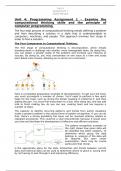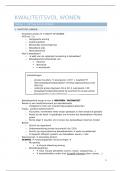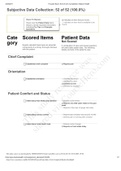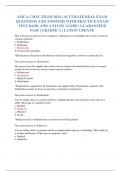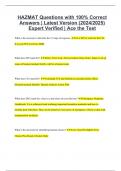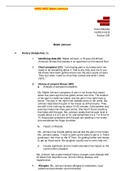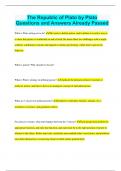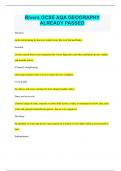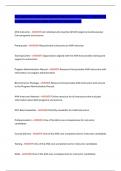Essay
Unit 4: Programming Assignment 1 (Learning Aim A) Distinction
- Course
- Institution
UNIT 4 PROGRAMMING , COVERS ALL CRITERIA. DISTINCTION LEVEL ASSIGNMENT Learning aim A: Examine the computational thinking skills and principles of computer programming A.P1 Explain how computational thinking skills are applied in finding solutions that can be interpreted into software a...
[Show more]
